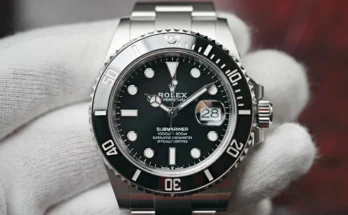Introduction
One of the things that every engaged person looks forward to is their engagement ring. Anybody would want to choose a breath-taking diamond engagement ring. However, picking the ideal bling can be very challenging with the abundance of options available. The possibilities are not limited to diamonds; there are different gems and metal settings like the white gold tanzanite ring and vintage blue sapphire rings.
Because of this, we’ve created a guide with all the crucial factors to consider before buying that giant rock to assist you in making the proper decision.
1. Compromise carefully
Diamonds are one of the most gemstones in the world. Despite knowing this fact, many find diamonds pricier than initially expected. Make a budget and review your finances before you buy a diamond. Different types of diamonds have different prices; see what kind of diamond you can afford.
It is not a shameful act to compromise on a diamond. Compromise does not entail just purchasing a diamond at a discount. In actuality, diamonds are seldom a good deal. There are fair offers, but if a diamond appears to be priced lower than the others, there is a good explanation.
You will obtain a better diamond if you choose a lesser carat weight over a diamond that appears to have a “good value” compared to other diamonds of similar weight. If you make a slight reduction in stone quality or size, you can still obtain the ring of your dreams.
2. Alternatives to a mined diamond
Technological advancement has not only made our life easier but has also helped create alternatives to many gemstones. Various stones other than mined diamonds would be great for engagement rings. For instance, lab-created diamonds are gaining popularity. These are comparable in quality to mined diamonds in beauty and durability, but they cost roughly 30% less.
While diamonds are the “traditional” engagement ring gemstone, colourful gems can frequently withstand daily wear and are unbelievably stunning. The most common gems for rings are sapphire, ruby, and emerald, but morganite and aquamarine are also excellent choices.
3. Cut quality is king.
A recognized laboratory, such as the Gemological Institute of America (GIA) or American Gem Society, should provide a grading report with every diamond (AGS). This report has many details, but the simplest method to judge a stone’s quality is to look at its cut, clarity, colour, and carat. These grades will be your initial indicator of the diamond’s quality, though you should still meticulously inspect the stone.
The cut is the aspect of the Four Cs that matters the most for diamonds. Imperfections in colour and clarity will be less evident in a well-cut diamond. A well-cut diamond will appear brighter and more prominent than its carat weight because of this.
Consequently, when purchasing diamonds, maintain your expectations for cut quality.
4. Diamonds come in many shapes.
The most popular shape of a diamond is a round-shaped one. But diamonds come in various forms. The most popular shapes are princess, oval, cushion, emerald, pear, heart, and the old European cut. Some of these shapes are available at a discount to round diamonds.

Compared to rounds of the same carat weight, most non-round shapes seem larger. They appear more prominent because of their elongated shape or diagonal length.
The square princess cut is the second most common diamond shape after the round. Pear and oval forms are also very fashionable right now. The rose gold ring emerald is most famous in the emerald cut.
5. Carats influence price more than appearance.
The price of diamonds is significantly influenced by carat weight. That’s because at specific “magic numbers” or benchmark carat sizes, such as 0.50 ct, 1.00 ct, 1.50 ct, 2.00 ct, 3.00 ct, 4.00 ct, and 5.00 ct, diamond costs per carat increase.
Diamond prices rise exponentially as carat weight increases. A diamond’s face-up size does not, however, grow in the same manner. A half-carat diamond’s face-up area is more significant than twice as large as a one-carat diamond. A decrease in carat weight has a more substantial effect on pricing than on appearance.
6. Keep colour and clarity simple.
Although colour and clarity are part of the 4Cs and are considered the basis for judging a diamond, we recommend thinking of these diamond properties in terms of “good” or “not good.” The diamond will either appear colourless or it won’t. The diamond will either be “eye-clean” or it won’t, depending on its clarity.
You won’t overpay using this method for colour or clarity grades your eye cannot tell apart. If you don’t know the difference between a D and an H colour diamond, there’s no reason to pay more for a D colour diamond. Additionally, there is no need to spend more money on a diamond with Flawless (F) clarity since most SI1 diamonds will also appear flawless.
7. Consider the ring style.
Diamonds are an essential aspect of a diamond ring. But equally important is a ring style that would fit the diamond well. A ring style that suits your style and personality will make a big difference. The setting and the metal’s colour—white, yellow, or rose—will all be important factors.
Think about whether you want a simple, complex, or in-between setting by giving it some thought. Many people around the world adore diamond-paved rings. Others want a straightforward halo arrangement. Minimalists and traditionalists could prefer a solitaire arrangement. Some people like a pattern with more sparkle.
8. Do your research before buying a diamond.
Before making a purchase, it is always a good idea to do some research. When investing thousands of dollars in an engagement ring, you want to be sure that it will look excellent and that you aren’t overpaying for inferior quality.
However, a wide range of variables affects diamond quality. No matter how much research you undertake, there is no way to become an expert without years of training. Of course, you don’t need to be an expert to know what looks good.
9. Always, Always, See Before You Buy
Finding a diamond that looks good is the secret to finding one you are delighted with as a first-time diamond buyer. You can tell if a diamond is a keeper or a disappointment by actually seeing it perform.
Where you buy your diamond becomes crucial. You can quickly inspect your stone if you purchase jewellery from a physical store. Make sure the jeweller magnifies the diamond and displays it to you in the setting it is meant for, as well as from several angles. Even if you’re purchasing online, you must still see the diamond in person. Another fantastic choice is to go custom.
Conclusion
We hope this guide will help you find the perfect diamond engagement ring. Just remember to follow your heart and choose one that feels good to you rather than the one that would be good for the pocket. Happy shopping!
Author Bio: –

Pritesh runs the UK & Europe operations for Magneto IT Solutions. He works closely with clients to ensure business objectives are aligned to the e-commerce and technology strategy, forming long term partnerships. Magneto are an award winning and established e-commerce agency (founded in 2010). Our core expertise lies in developing market-leading end-to-end B2C, B2B e-commerce strategies, consulting, web design & development, UI/UX design, ERP/CRM integration and digital marketing.
From creating unique websites to innovative mobile applications, our team uses Agile methodology allowing for an iterative and adaptable approach to project delivery. At the heart of each engagement is the client, ensuring highest levels of satisfaction. We have helped over 200 companies build and improve their online presence.




